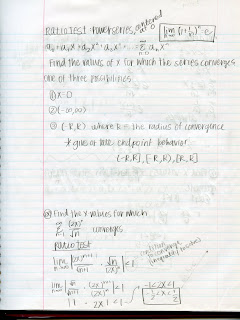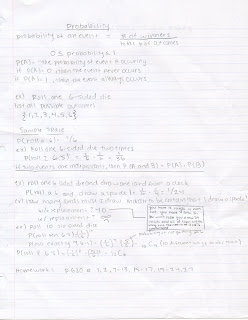


Today we learned about power series' centered at zero and applying the ratio test to these problems. Basically you're finding the x-values for which the ∑ converges. You have to pay attention to the type of ∑ you're looking at: geometric rules can apply here and save you some work. There are three possibilities of answers: 1) x=0; 2) x=all real numbers; 3) (-R,R).






